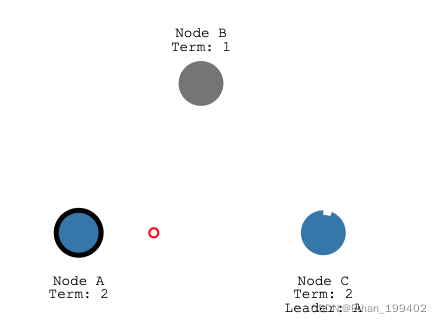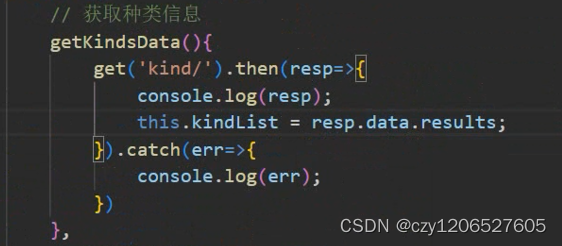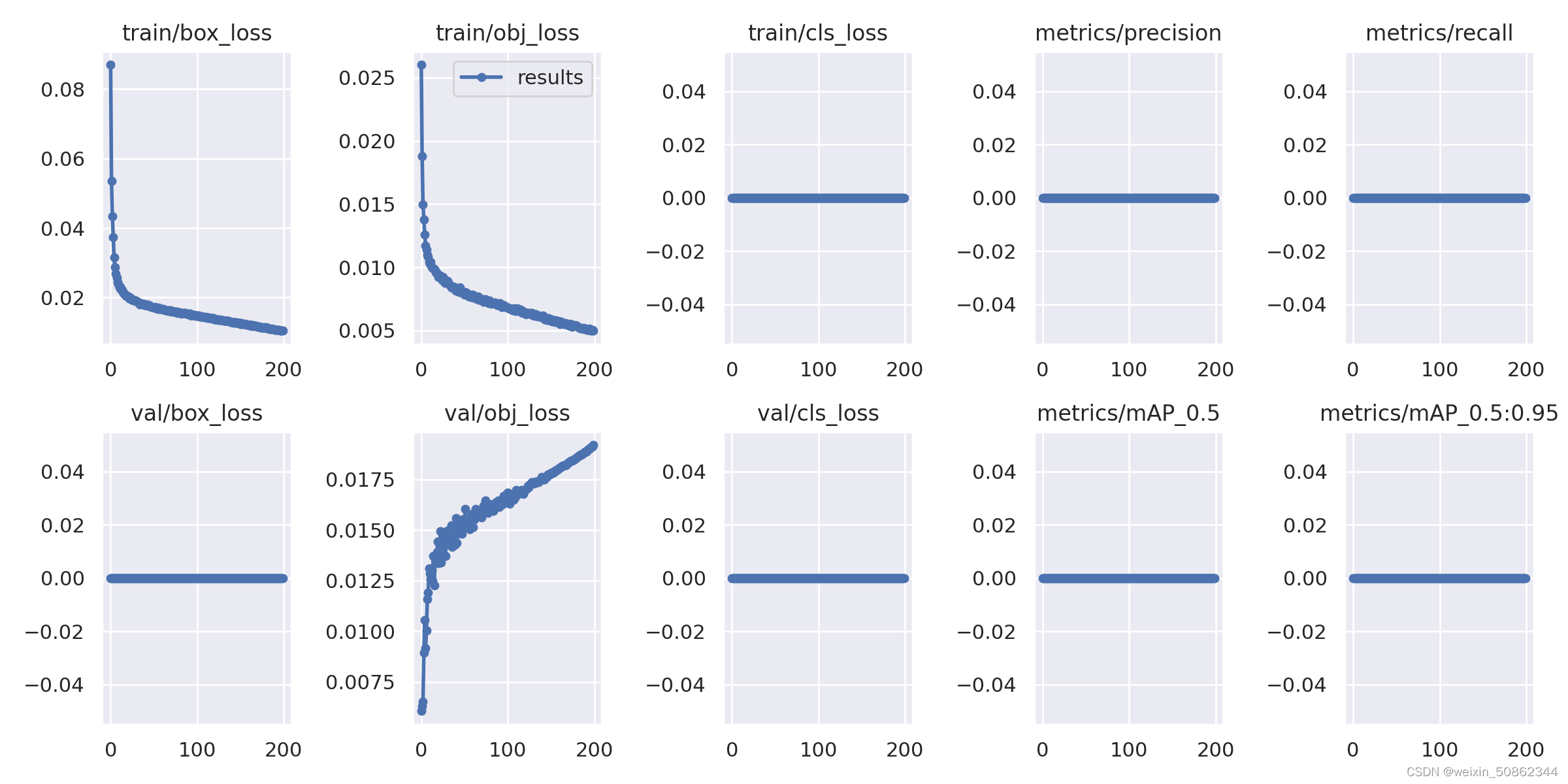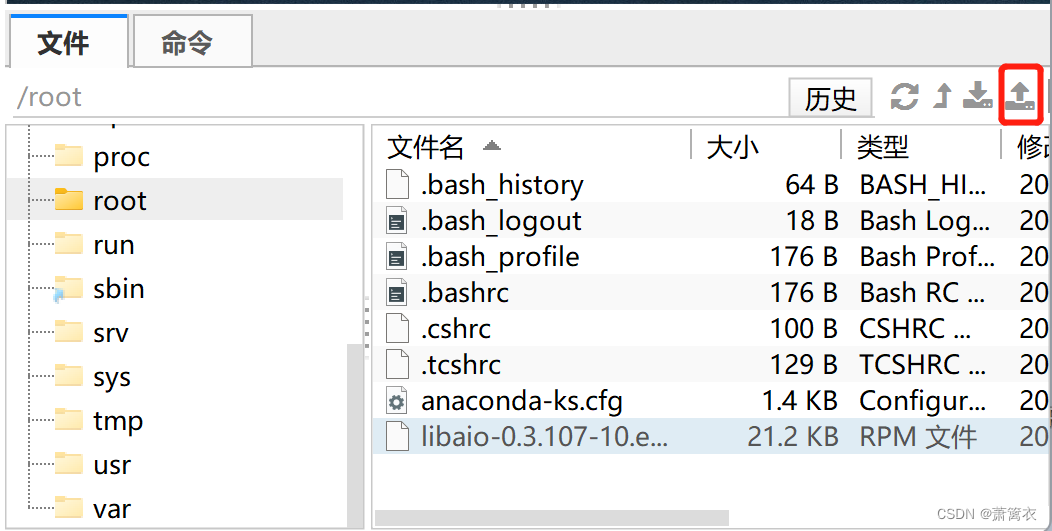当前位置:网站首页>Flask-SQLAlchemy
Flask-SQLAlchemy
2022-08-02 14:21:00 【Pasta with 42 concrete】
Flask-SQLAlchemy
# SQLAlchemy是一个基于Python实现的ORM框架,跟web框架无关,独立的
# django的orm,sqlalchemy(big and heavy),peewee(小而轻)
# 异步orm框架:GINO
# PythonThere is no particularly good microservice framework in the world:nameko
# java:dubbo(阿里开源),springcloud
# go:grpc,go-zero,go-micro
pip install flask-sqlalchemy
1、基本配置
| 配置选项 | 说明 |
|---|---|
SQLALCHEMY_DATABASE_URI | 连接数据库.示例:mysql://username:[email protected]/post/db?charset=utf-8 |
SQLALCHEMY_BINDS | 一个将会绑定多种数据库的字典. 更多详细信息请看官文 绑定多种数据库. |
SQLALCHEMY_ECHO | 调试设置为true |
SQLALCHEMY_POOL_SIZE | 数据库池的大小,默认值为5. |
SQLALCHEMY_POOL_TIMEOUT | 连接超时时间 |
SQLALCHEMY_POOL_RECYCLE | 自动回收连接的秒数. |
SQLALCHEMY_MAX_OVERFLOW | 控制在连接池达到最大值后可以创建的连接数.当这些额外的 连接回收到连接池后将会被断开和抛弃. |
SQLALCHEMY_TRACK_MODIFICATIONS | 如果设置成 True (默认情况),Flask-SQLAlchemy 将会追踪对象的修改并且发送信号.这需要额外的内存, 如果不必要的可以禁用它. |
操作数据库需要先创建一个db对象,通常写在exts.py文件里.
from flask_sqlalchemy import SQLAlchemy
db = SQLAlchemy()
flask项目一般将数据库配置写入configs.py文件里面,配置在创建引擎前需写好,不要在程序运行时修改配置,如下.
HOST = '127.0.0.1'
PORT = '3306'
DATABASE = 'flask1'
USERNAME = 'root'
PASSWORD = '123456'
DB_URI = "mysql+pymysql://{username}:{password}@{host}:{port}/{db}?charset=utf8".format(username=USERNAME,password=PASSWORD, host=HOST,port=PORT, db=DATABASE)
SQLALCHEMY_DATABASE_URI = DB_URI
SQLALCHEMY_TRACK_MODIFICATIONS = False
SQLALCHEMY_ECHO = True
写完数据库配置后需要和app绑定,app.py文件里写flask应用的创建和蓝图的注册等等,如下:
from flask import Flask
import configs
from exts import db
app = Flask(__name__)
# 加载配置文件
app.config.from_object(configs)
# db绑定app
db.init_app(app)
2、SQLAlchemy的数据类型
The image below shows the most commonly used onesSQLAlchemy列的类型:
[外链图片转存失败,源站可能有防盗链机制,建议将图片保存下来直接上传(img-udGPQuRg-1636029658793)(20161107010358428)]
The image below shows the most commonly used onesSQLAlchemy列选项:
[外链图片转存失败,源站可能有防盗链机制,建议将图片保存下来直接上传(img-FpFLjBKw-1636029658794)(20161107010602160)]
Flask-SQLAlchemy 要求每个模型都要定义主键,这一列经常命名为 id.
下图展示了SQLAlchemyProvided filter and query functions:
[外链图片转存失败,源站可能有防盗链机制,建议将图片保存下来直接上传(img-69Yh4qM7-1636029658796)(20161107022638126)]
[外链图片转存失败,源站可能有防盗链机制,建议将图片保存下来直接上传(img-XDEwUEgq-1636029658797)(20161107023259291)]
3、示例
# -*- coding:utf-8 -*-
from flask import Flask
from flask_sqlalchemy import SQLAlchemy
app = Flask(__name__)
# url的格式为:数据库的协议://用户名:密码@ip地址:端口号(默认可以不写)/数据库名
app.config["SQLALCHEMY_DATABASE_URI"] = "mysql://root:[email protected]/first_flask"
# 动态追踪数据库的修改. 性能不好. 且未来版本中会移除. 目前只是为了解决控制台的提示才写的
app.config["SQLALCHEMY_TRACK_MODIFICATIONS"] = False
# Create an operation object for the database
db = SQLAlchemy(app)
class Role(db.Model):
__tablename__ = "roles"
id = db.Column(db.Integer,primary_key=True)
name = db.Column(db.String(16),unique=True)
# 给Role类创建一个uses属性,关联users表.
# backrefis the reverse to giveUser类创建一个role属性,关联roles表.这是flask特殊的属性.
users = db.relationship('User',backref="role")
# 相当于__str__方法.
def __repr__(self):
return "Role: %s %s" % (self.id,self.name)
class User(db.Model):
# Redefine a name for the table,The default name is lowercase of the class name,For example, the default table name of this class is user.
__tablename__ = "users"
id = db.Column(db.Integer,primary_key=True)
name = db.Column(db.String(16),unique=True)
email = db.Column(db.String(32),unique=True)
password = db.Column(db.String(16))
# 创建一个外键,和django不一样.flaskYou need to specify a specific field to create a foreign key,Foreign keys cannot be created based on class names
role_id = db.Column(db.Integer,db.ForeignKey("roles.id"))
def __repr__(self):
return "User: %s %s %s %s" % (self.id,self.name,self.password,self.role_id)
@app.route('/')
def hello_world():
return 'Hello World!'
if __name__ == '__main__':
# 删除所有的表
db.drop_all()
# 创建表
db.create_all()
ro1 = Role(name = "admin")
# 先将ro1对象添加到会话中,可以回滚.
db.session.add(ro1)
''' 在执行 db.session.commit() Error submitting to the database,A database rollback needs to be performed,Ensure that subsequent operations are normal. try: . . except Exception as e: db.session.rollback() # Perform a database rollback '''
try:
ro2 = Role()
ro2.name = 'user'
db.session.add(ro2)
# After inserting the data, it must be submitted
db.session.commit()
except Exception as e:
db.session.rollback()
raise e
try:
us1 = User(name='wang', email='[email protected]', password='123456', role_id=ro1.id)
us2 = User(name='zhang', email='[email protected]', password='201512', role_id=ro2.id)
us3 = User(name='chen', email='[email protected]', password='987654', role_id=ro2.id)
us4 = User(name='zhou', email='[email protected]', password='456789', role_id=ro1.id)
us5 = User(name='tang', email='[email protected]', password='158104', role_id=ro2.id)
us6 = User(name='wu', email='[email protected]', password='5623514', role_id=ro2.id)
us7 = User(name='qian', email='[email protected]', password='1543567', role_id=ro1.id)
us8 = User(name='liu', email='[email protected]', password='867322', role_id=ro1.id)
us9 = User(name='li', email='[email protected]', password='4526342', role_id=ro2.id)
us10 = User(name='sun', email='[email protected]', password='235523', role_id=ro2.id)
db.session.add_all([us1, us2, us3, us4, us5, us6, us7, us8, us9, us10])
db.session.commit()
except Exception as e:
db.session.rollback()
raise e
app.run(debug=True)
4、一对多关系
# 一对多关系:一个HobbyMultiple people can like it,关联字段写在多的一方,Person
class Hobby(Base):
__tablename__ = 'hobby'
id = Column(Integer, primary_key=True)
caption = Column(String(50), default='篮球')
class Person(Base):
__tablename__ = 'person'
nid = Column(Integer, primary_key=True)
name = Column(String(32), index=True, nullable=True)
# hobby指的是tablename而不是类名,跟hobby表的idFields establish foreign key relationships
hobby_id = Column(Integer, ForeignKey("hobby.id"))
# 跟数据库无关,不会新增字段,只用于快速链表操作
# 类名,backref用于反向查询
hobby = relationship('Hobby', backref='persons')
5、多对多关系
# 多对多关系:Boy and girl dating,A boy can date multiple girls,A girl can date more than one boy
class Boy2Girl(Base):
__tablename__ = 'boy2girl'
id = Column(Integer, primary_key=True, autoincrement=True)
girl_id = Column(Integer, ForeignKey('girl.id'))
boy_id = Column(Integer, ForeignKey('boy.id'))
class Girl(Base):
__tablename__ = 'girl'
id = Column(Integer, primary_key=True)
name = Column(String(64), unique=True, nullable=False)
class Boy(Base):
__tablename__ = 'boy'
id = Column(Integer, primary_key=True, autoincrement=True) # autoincrement自增
name = Column(String(64), unique=True, nullable=False)
# 与生成表结构无关,仅用于查询方便,放在哪个单表中都可以
girls = relationship('Girl', secondary='boy2girl', backref='boys')
6、SQLAlchemy的增删改
from sqlalchemy import create_engine
from sqlalchemy.orm import sessionmaker
from models import Users, Person, Hobby, Girl, Boy, Boy2Girl
# Basic addition, deletion, search and modification of a single table
# 第一步:得到engine对象
engine = create_engine("mysql+pymysql://root:[email protected]:3306/aaa", max_overflow=0, pool_size=5)
# 第二步:得到Session对象,as a class
Session = sessionmaker(bind=engine)
# 第三步:创建session对象
# 每次执行数据库操作时,都需要创建一个session
session = Session()
# 第四步:以后使用session来操作数据
# #### 1Add a single
# 先创建出一个user对象
# lqz = Users(name='lqz', email='[email protected]')
# # Add the object to the database
# session.add(lqz) # Only one can be added at a time
# # 提交事务
# session.commit()
# # 把连接放回到池中
# session.close()
##### 2 Add multiple at the same time
# lqz = Users(name='lqz1', email='[email protected]')
# egon = Users(name='egon', email='[email protected]')
#
# lyf=Girl(name='刘亦菲')
# # Add the object to the database
# session.add_all([lqz,egon,lyf])
# # 提交事务
# session.commit()
# # 把连接放回到池中
# session.close()
##### 3 Basic check(Check is the most,Simple now)
# lqz=session.query(Users).filter_by(name='lqz').first() # 查一个,返回Users对象
# lqz=session.query(Users).filter_by(name='lqz').all() # 查所有,返回列表
# print(lqz)
#### 4 删除(Check and delete)
# res=session.query(Users).filter_by(name='lqz').delete()
# session.commit()
# session.close()
### 5 修改
# res=session.query(Users).filter_by(name='lqz1').update({'name':'lqz_nb'})
# 类似于原来的F查询,Take out the fields in the table and use them
# synchronize_session=False Indicates the addition of strings
# res=session.query(Users).filter_by(name='lqz_nb').update({Users.name: Users.name + "099"}, synchronize_session=False)
# synchronize_session="evaluate" Indicates the addition of numbers(If it cannot be converted into data,Actually wrong,直接设为0)
session.query(Users).filter_by(name='1').update({
"id": Users.id + 10}, synchronize_session="evaluate")
session.commit()
session.close()
7、SQLAlchemy的查
1.The following methods all return a new query,It needs to be used with the actuator.
filter(): 过滤,功能比较强大,多表关联查询.
filter_by():过滤,It is generally used in filtering scenarios for single-table queries.
order_by():排序.默认是升序,Descending requires a package import:from sqlalchemy import * .然后引入desc方法.比如order_by(desc("email")).Sort in descending alphabetical order by mailbox.
group_by():分组.
2.Below are some commonly used actuators:Use with the filter above.
get():获得idA function equal to a few.
比如:查询id=1的对象.
get(1),切记:Not in parentheses“id=”,直接传入idThe value isok.Because the function of this function is to query the object whose primary key is equal to a few.
all():查询所有的数据.
first():查询第一个数据.
count():返回查询结果的数量.
paginate():分页查询,Returns a pagination object.
paginate(参数1,参数2,参数3)=>参数1:当前是第几页;参数2:每页显示几条记录;参数3:Whether to return an error.
The returned pagination object has three properties:items:获得查询的结果,pages:Get the total number of pages,page:获得当前页.
3.Commonly used logical symbols:
You need to import the package to use it:from sqlalchemy import *
not_、and_、or_ And the sort mentioned abovedesc.
Commonly used built-in ones:in_:Indicates what range a field is in.
4.Some database queries for other relationships:
endswith():以什么结尾.
startswith():以什么开头.
contains():包含
示例
1. 查询所有用户数据
User.query.all()
2. 查询有多少个用户
User.query.count()
3. 查询第1个用户
User.query.first()
4. 查询id为4的用户[3种方式]
User.query.get(4)
User.query.filter_by(id=4).first()
User.query.filter(User.id==4).first()
filter:(类名.属性名==)
filter_by:(属性名=)
filter_by: 用于查询简单的列名,不支持比较运算符
filter比filter_by的功能更强大,支持比较运算符,支持or_、in_等语法.
5. 查询名字结尾字符为g的所有数据[开始/包含]
User.query.filter(User.name.endswith('g')).all()
User.query.filter(User.name.contains('g')).all()
6. 查询名字不等于wang的所有数据[2种方式]
from sqlalchemy import not_
PS:The format of the logical query:逻辑符_(Some other judgments of class attributes)
User.query.filter(not_(User.name=='wang')).all()
User.query.filter(User.name!='wang').all()
7. 查询名字和邮箱都以 li 开头的所有数据[2种方式]
from sqlalchemy import and_
User.query.filter(and_(User.name.startswith('li'), User.email.startswith('li'))).all()
User.query.filter(User.name.startswith('li'), User.email.startswith('li')).all()
8. 查询password是 `123456` 或者 `email` 以 `itheima.com` 结尾的所有数据
from sqlalchemy import or_
User.query.filter(or_(User.password=='123456', User.email.endswith('itheima.com'))).all()
9. 查询id为 [1, 3, 5, 7, 9] 的用户列表
User.query.filter(User.id.in_([1, 3, 5, 7, 9])).all()
10. 查询name为liu的角色数据:关系引用
User.query.filter_by(name='liu').first().role.name
11. 查询所有用户数据,并以邮箱排序
User.query.order_by('email').all() 默认升序
User.query.order_by(desc('email')).all() 降序
12. 查询第2页的数据, 每页只显示3条数据
help(User.query.paginate)
pages = User.query.paginate(2, 3, False)
PS:三个参数: 1. The current number of pages to query 2. 每页的数量 3. Whether to return an error
pages.items # 获取查询的结果
pages.pages # 总页数
pages.page # 当前页数
8、Flask-SQLAlchemy使用
# 使用步骤
1 导入from flask_sqlalchemy import SQLAlchemy 实例化得到db对象
2 在app中注册
db.init_app(app)
3 Table model inheritance db.Model
4 session是db.session
db.session使用即可
#存在问题
1 Table migration is troublesome
2 Dynamic modification of fields is not supported
9、flask-migrate使用
# 像djagno一样,Execute two migration commands,Realize the dynamic migration of the database
# pip install flask-migrate
# 使用步骤
第一步:from flask_migrate import Migrate, MigrateCommand
第二步:执行
Migrate(app, db)
manager.add_command('db', MigrateCommand)
python3 manage.py db init 初始化:只执行一次,生成一个migrations文件夹
# Create a new table directly afterwards,新建字段,执行命令,就会自动同步
python3 manage.py db migrate 等同于 makemigartions
python3 manage.py db upgrade 等同于migrate
边栏推荐
猜你喜欢
随机推荐
Raft对比ZAB协议
第三单元 视图层
网页设计(新手入门)[通俗易懂]
PHP open source customer service system _ online customer service source code PHP
[ROS] Introduction to common tools in ROS (to be continued)
paddle window10环境下使用conda安装
【Camera2】由Camera2 特性想到的有关MED(多场景设备互动)的场景Idea
Sentinel源码(五)FlowSlot以及限流控制器源码分析
Unit 3 view layer
The 2nd China Rust Developers Conference (RustChinaConf 2021~2022) Online Conference Officially Opens Registration
云片网案例
[ROS] (06) ROS Communication - Topic Communication
第六单元 初识ORM
【Tensorflow】AttributeError: module 'keras.backend' has no attribute 'tf'
VMM是什么?_兮是什么意思
Unit 13 Mixing in View Base Classes
Swagger 的使用
redis分布式锁和看门狗的实现
8576 顺序线性表的基本操作
ToF相机从Camera2 API中获取DEPTH16格式深度图




![[ROS]ROS常用工具介绍(待续)](/img/ea/e390106f750bf697e62a3a296014d2.png)



